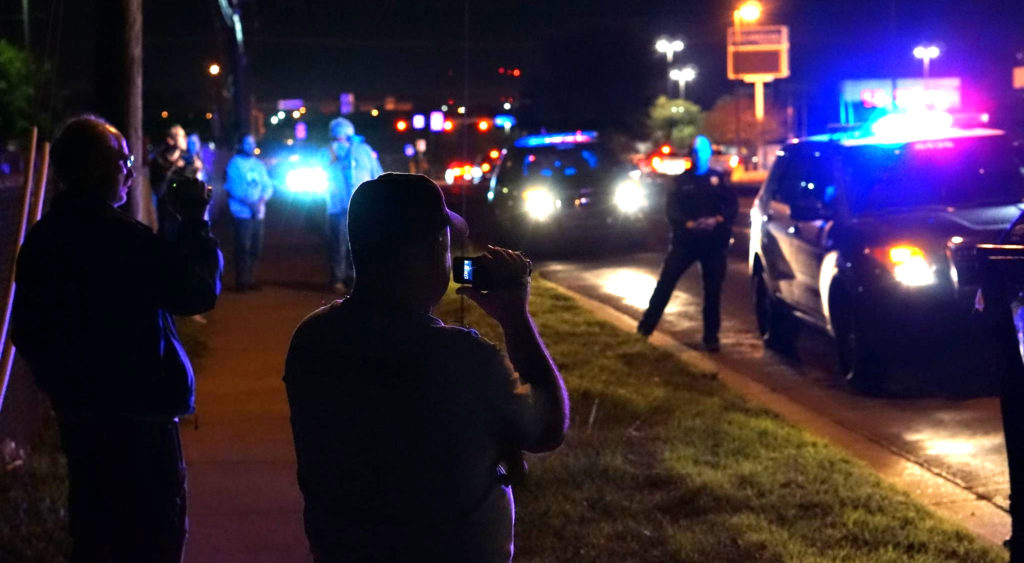Originally published at MintPress News.
AUSTIN, Texas — From the Rodney King incident in 1991 to more recent incidents like the deaths of Eric Garner and Freddie Gray, we might never know the appalling reality of modern police brutality if it weren’t for video recorded by bystanders.
Multiple courts have upheld the rights of journalists and photographers to take photos or video in public spaces and film the police and other law enforcement going about their duties. However, the ACLU notes:
[T]here is a widespread, continuing pattern of law enforcement officers ordering people to stop taking photographs or video in public places and harassing, detaining, and arresting those who fail to comply.
The right of citizens to record the police is a critical check and balance. It creates an independent record of what took place in a particular incident, free from accusations of bias, lying, or faulty memory. It is no accident that some of the most high-profile cases of police misconduct have involved video and audio records.

Ramsey Orta, the man who filmed Eric Garner’s July 2014 death on Staten Island, New York, was repeatedly arrested and harassed by police. And Kevin Moore, the man who filmed the abuse of Freddie Gray in Baltimore, was charged with inciting a riot last month. While nothing can guarantee a person’s safety when filming police, some apps can go beyond the built-in camera in helping to hold police accountable and protect video footage from confiscation:
- “Mobile Justice” — Created by the ACLU of California and supported by other local affiliates, the app allows a witness to record police activity with a smartphone then automatically upload the footage to the ACLU. It can also alert users to nearby police incidents. Mobile Justice is available on iOS and Android.
- Live streaming apps — Live streaming apps allow viewers to witness events as they unfold while simultaneously creating an archive of events for later reference. Popular apps include Livestream andUstream. There are a couple of drawbacks: The quality is often poorer than video recorded directly to a smartphone, and some popular new streaming apps, like Periscope, only keep archives for a limited time. Update July 6 2016: Periscope now archives all videos permanently unless the user chooses otherwise. Facebook Live is also a popular livestreaming option.
- Social media — Especially when used with video or other recording apps, social media is a key way to get a story out to the world. Facebook videos can spread rapidly across the massive network, and proper use of hashtags on Twitter and Instagram can help photos or other reports go viral and potentially reach millions.
- “I’m Getting Arrested” — An important tool of last resort in the hands of Android-using activists, “I’m Getting Arrested” can send a pre-written emergency text message to a list of phone numbers with the press of a button. It can even tweet via Twitter’s text message gateway. [Writer’s Note: Be careful not to accidentally “butt text” an emergency list while marching or traveling to a protest.]
In addition to modern tools, the human element should not be overlooked. Whenever possible, people filming police actions or protests should work in a team. One camera person can move in for closeups while others’ protect them by filming the first activist from a distance. Groups can even film in formation to simultaneously gather multiple angles of a single incident.